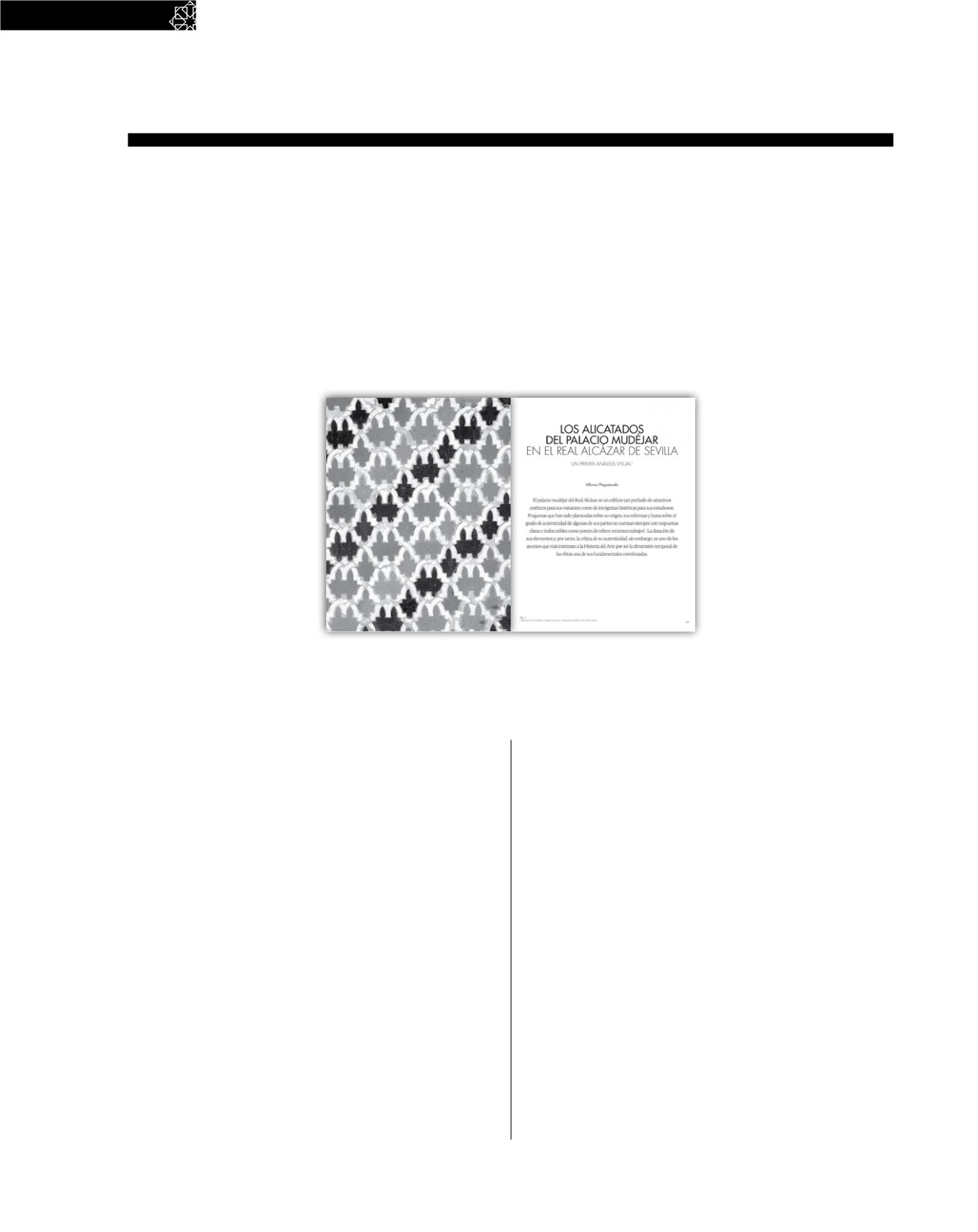
304 Apuntes del Alcázar de Sevilla
E
nglish
version
analysis
TILE-WORK IN THE MUDÉJAR PALACE
IN THE ROYAL ALCÁZAR OF SEVILLE.
A Preliminary Visual Analysis1
Alfonso Pleguezuelo
Pages 218-232
T
he Mudéjar Palace of the Royal Alcázar is a building full of
as many aesthetic appeals for visitors to enjoy as histori-
cal mysteries for its scholars. Questions posed regarding
its origin, restoration and even the degree of authenticity
of some of its parts are not always met with clear and indisputable
answers as recent works have emphasized
2
. Dating of its compo-
nents, and therefore, the criticism of its authenticity, is without a
doubt one of the most interesting issues of art history, the tempo-
ral dimension of the works being one of its key points. Meticulous
archaeological interventions, accurate measurements of its com-
ponents, methodical documentary searches, typological compara-
tive analysis, deductive reasoning of its constructive logic, scholarly
studies of its ornaments or sophisticated analysis of its materials are
specialized strategies which, neither by themselves or together, have
been capable of unraveling some of the mysteries of this monument
which still resists comprehension from a rational perspective. In the
face of such helplessness, it is sometimes tempting to let oneself be
quietly yet uninhibitedly captivated by the sensuous delights of its
spaces and decorations, as did those now unknown romantic visi-
tors, without asking questions that would cast doubts and break the
spell which this monument still casts over our modern sensitivity,
so often blamed on our faith —sometimes blind— in science and
technology.
Nevertheless, as we are aware of the responsibility that falls upon
us as academics we will try to make another attempt at an analy-
sis based on the pure observation of the work, focused on only one
aspect of the kaleidoscopic ensemble: its ceramic tilings and their
possible evolution.
To avoid committing any possible new mistakes we will start with
something obvious: that the date of some of the tile-work does not
always coincide with the date of the architecture to which it is at-
tached. We also consider the fact that precisely some of the palace
walls, despite recent interesting discoveries, have received quite
varied dating, depending on the scholar consulted. Luckily, recently
great progress has been made to achieve a more precise chronology
of its roofing and timber. Its plaster-work still poses giant knowledge
gaps and its tiles to this day still have not been studied in detail, and
for this reason we have decided to study them ourselves in hope of
making cautious advances in the search for more information on
this important facade in the Palacio del Rey Don Pedro.
Many questions could be asked about these ceramic tilings,
amongst them, the question of Granada, the name or names of
those that made them, the geometric origin of their motifs, the
hidden symbolism, graphical representations, past photographs


